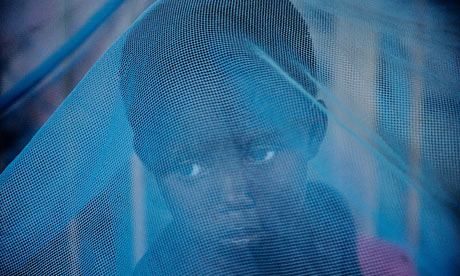
Every day, 1,200 children worldwide succumb to malaria — deaths that could easily be prevented with effective and low-cost interventions.
Saturday, April 25, marked World Malaria Day, and while advocates are celebrating some noteworthy gains, they’re also calling on the health community to ramp up its efforts to protect those who are most vulnerable to the disease with affordable measures.
Malaria, caused by Plasmodium parasites that are transmitted through mosquito bites, has been infecting humans for as long as humans have been in existence. A widespread and potentially lethal infectious disease, at its peak malaria infested every continent, except Antarctica, and has killed more people than any other single disease in history.
Through malaria prevention, diagnosis and treatment, 4.3 million lives were saved between 2001 and 2013, according to UNICEF. Malaria mortality rates have fallen by 47 percent globally since 2000, and by 54 percent in Africa. Still, more than half a million people died from the disease in 2013, and the vast majority of the cases occurred in Africa.
To bring the death figures down even further, and nearly eradicate the issue in the next 15 years, the World Health Organization (WHO) is now urging for a more aggressive approach to prevention and treatment.
WHO now recommends diagnostic testing for all suspected malaria cases to make sure that malaria drugs are solely dispensed to patients who have contracted the disease. More than 319 million rapid diagnostic tests (RDTs) were purchased in 2013 compared to 46 million in 2008. Despite this progress, nearly 40 percent of people with suspected malaria at public health facilities in Africa are not tested.
The group also recommends that the most susceptible groups, which includes pregnant women, children under 5 and infants, get preventative treatments. Strategies to protect pregnant women from malaria, for example, cost less than 50 cents for the full course of four doses, according to UNICEF. Coverage with such treatments, however, remains low and needs to be significantly scaled up, WHO says.
One very promising development in the fight to end malaria is the emergence of a number of recent innovations that could bolster traditional malaria control efforts.
The world’s first malaria vaccine — a shot designed for children in Africa — could be approved by international regulators as soon as October, according to Reuters.
Another key prevention tactic may lie in simple LED lights. A study published in March found that all arthropods analyzed (including mosquitoes) were significantly less attracted to customized LED lighting than fluorescent lighting.
A number of advocacy groups have also done a tremendous job in dispensing protective nets, which keep mosquitoes from preying on humans. Since 2000, more than half a billion such nets have been sent to Africa, according to The New York Times.
However, on-the-ground advocates remain concerned about how these life-saving nets are being misused in a number of African countries. In Mozambique, Nigeria, Uganda and elsewhere, some people are so desperate for food that they use the nets for fishing, the Times reported. Others fear that the nets are poisoned and can lead to impotence.
Despite such setbacks, advocates remain hopeful that with sustained funding, the disease can be brought to an end in the near future.
In November, Microsoft co-founder Bill Gates committed to increasing the budget for his foundation’s malaria program by 30 percent to more than $200 million per year. One of his goals includes developing a drug or vaccine that purges the malaria parasite in people who carry the disease, but don’t express any symptoms, the Associated Press reported.
“I really do believe that malaria can be eradicated in my lifetime,” Gates told the AP.
Research from the UN Special Envoy on Malaria indicates that every $1 invested in malaria control in Africa, on average, returns $40 in higher economic growth. The gains, however, are fragile, and retreating on investment now would not only reverse today’s progress but also allow malaria to reemerge.
Here’s how you, too, can join in the global fight against malaria:
- Send mosquito nets to communities in Africa through the U.N.’s “Nothing But Nets” charity. For just $10, you can protect a family and save a life. Your donation covers the cost of purchasing and delivering the tent, as well as educating the recipient on its proper use. Click here for more information.
- Fund malaria testing and treatment through Malaria No More’s “Power of One” initiative. For just $1, you can deliver a life-saving test and treatment to a child in Africa. Click here for more information.
- Advocate for malaria prevention by contacting your local elected officials and representatives and urging them to support U.S. involvement in the fight to end malaria. Click here for more information on how to do that.
